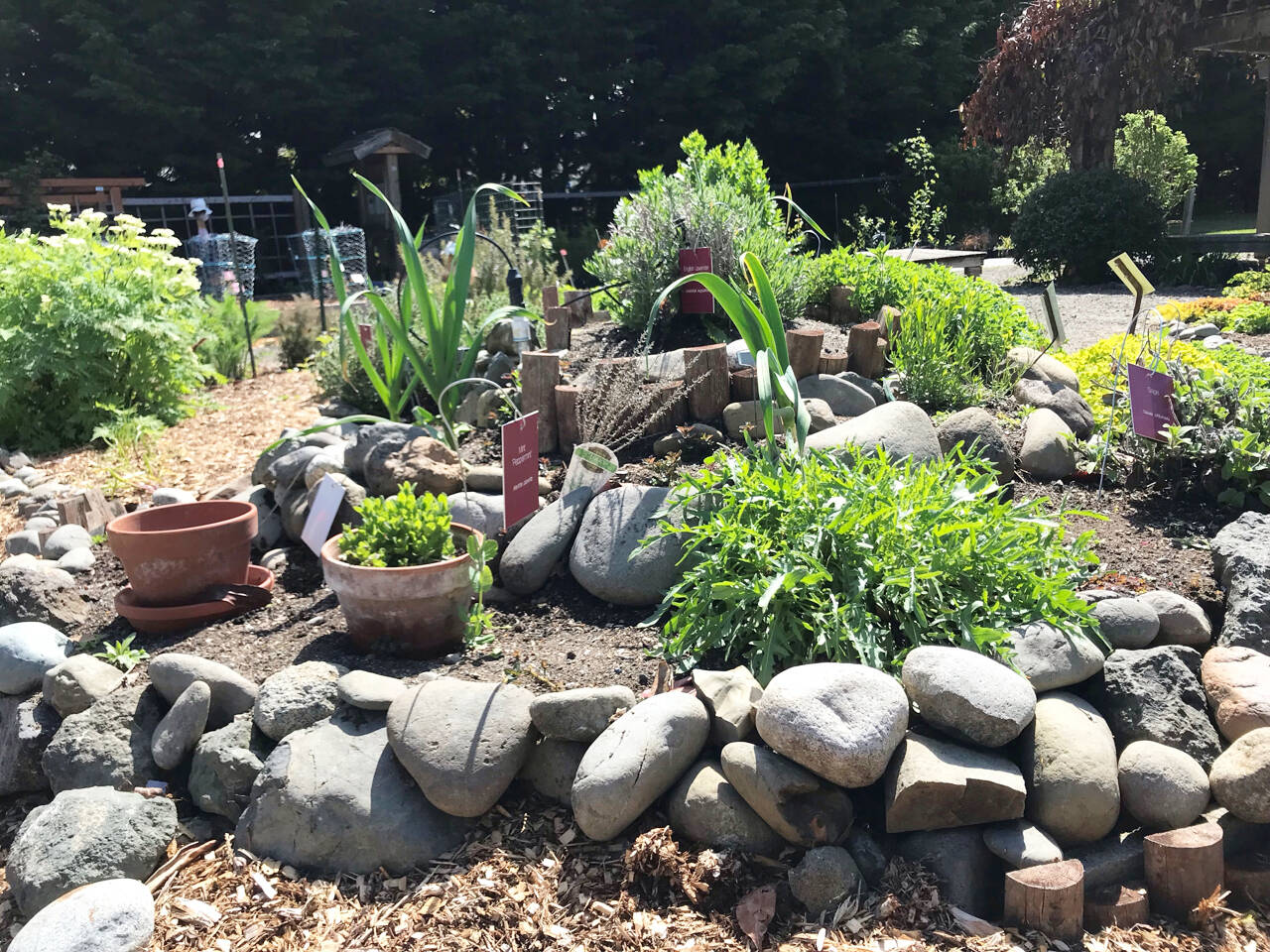What’s not to love about herbs? Culinary herbs season our food and are delightful plants to display in our landscape or garden. You can tuck them in with perennials or grow them in containers. Herbs are versatile, deer-resistant, and often drought tolerant plants well suited to Sequim’s climate.
Herbs generally prefer a fairly sunny spot and well-drained soil. Perennial herbs such as rosemary, thyme, sage, oregano and chives are fairly drought tolerant once they are well established. Other perennial herbs such as tarragon and mint can be grown in partial shade.
Most perennial herbs will need quite a bit of space. Learn their growth habits and plant accordingly. That 4-inch pot may grow into a 2-foot-by-3-foot plant, or even bigger after a few years. You can always plant annual herbs between them while they are small to make good use of space as they grow to their mature size.
Annuals such as dill, cilantro and basil can be started from seed indoors or purchased as starts. Each has its own unique habits but generally should be planted a foot apart.
Dill will grow quite tall by the end of the season. Plant basil in your warmest, most protected garden spot. Cilantro is apt to bolt early in warm weather. Like all annuals, these herbs will need more regular watering during the dry season.
Note: parsley is a biennial herb (taking two years to complete its life cycle) but is most often grown as an annual for best taste.
Water your herbs deeply when dry so the plants put down sturdy roots. Water-stressed plants don’t grow well or taste good. If your plants are growing well, don’t fertilize. The volatile oils that flavor herbs decline with lush growth. If you mulch with a rich compost, you may never need to fertilize.
Herbs need to be cut because harvesting them on a regular basis will encourage fuller growth. Even if not needed immediately, pinch them back as they mature and dry or freeze some for winter use.
Over the past few years, a very old idea, the potager garden, has become extremely popular in the garden design world. This style was originated in medieval France, amongst the monasteries. “Potager” literally means a thick and substantial soup — all the ingredients for this soup could be grown in the kitchen garden or potager. Making herbs an essential part of such a garden adds flavor as well as spice to life.
Plants are chosen for both their edible and ornamental natures and are put together in such a way that it looks pretty while still providing food for the household, a perfect place for beautiful herb plants.
Designing a potager garden can be as complex or as easy as your gardening style dictates. Historically, the gardens combine the utilitarian nature of the English kitchen garden with the style and grace of French fashion. It is basically an ornamental kitchen garden.
Some potager designs favor the style of knot gardens or designs that repeat a certain pattern or a symmetrical shape, but it is not the only way to design such a garden. A cottage style garden design, which is less formal, can also make a charming potager garden.
Woodcock Demonstration Garden in Sequim has a lovely cottage style herb garden. It features an informal rock spiral planting bed with annual as well as perennial herbs. In and around that you may find garlic, onions, and cabbage on occasion.
One edge of the garden features a perennial lemon balm hedge that returns every year to border the road. Old fashioned herbs such as sweet cicely, sorrel, and lovage grow in large, impressive mounds in spite of a valiant effort to keep them in control. Be aware that all these perennial herbs (along with mint, horseradish, and some others) tend to spread over the years and it may be wise to contain them with barriers to control their growth.
An evergreen bay tree and rosemary, plus edible flowers such as chrysanthemum and constantly reseeding calendula add interest. Marjoram and thyme make fragrant ground covers, and yes, there is also sage.
For more
Get more information on potager gardens look at “Gardening Know How: How to Design a Potager Garden” at gardeningknowhow.com/special/spaces/how-to-design-a-potager-garden.htm.
Susan Kalmar is a WSU-Certified Clallam County Master Gardener.
Gardens on display
The Clallam County Master Gardener Demonstration Garden, 2711 Woodcock Road, is open year round during daylight hours and visitors are welcome. Master Gardeners are often working Thursday mornings and available to answer questions. Parking is available in a lot (no gate) just east of Buttercup Lane.



